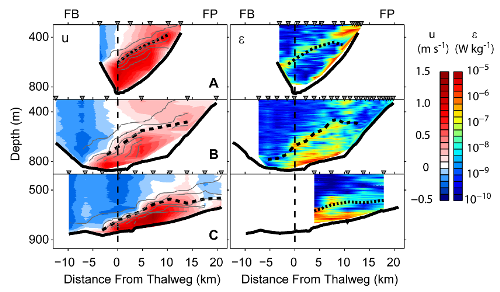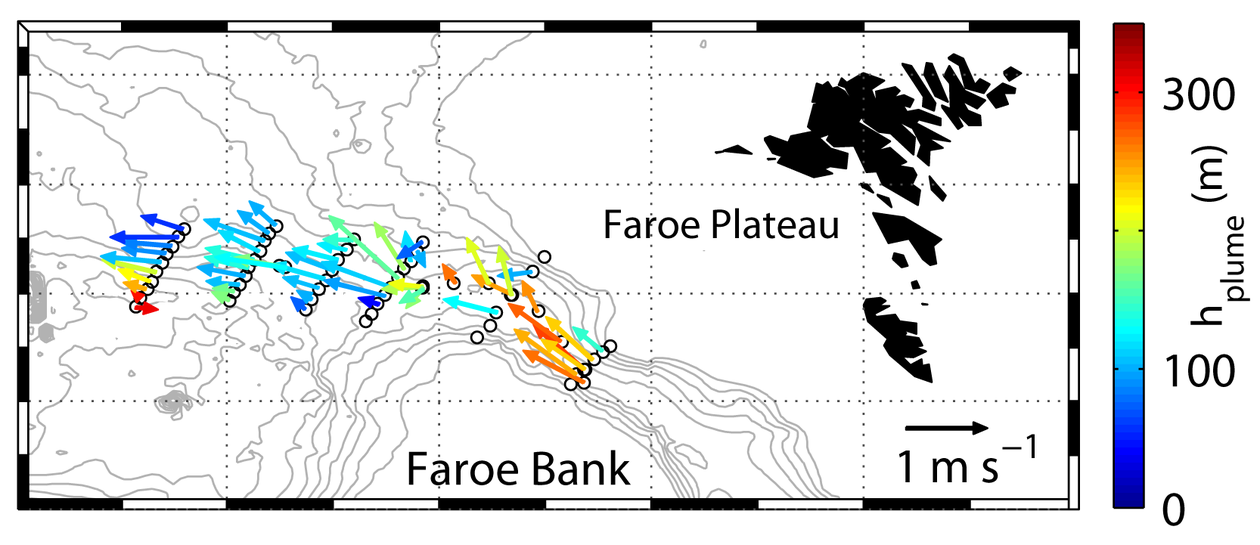OVERFLOW
Faroe Bank Channel Overflow: Dynamics and Mixing
Hovedinnhold
The overflow sites are regions of major water mass transformation, partly determining the long-term thermohaline equilibrium of the oceans and their dynamical response to changes in climatic forcing. In present Global Climate Models (GCMs), the overflows and processes occurring within them represent sub-grid scale processes that need to be parameterized. Dense overflows continue to be a weak point in large-scale models mainly because the overflows and the related processes – instabilities, entrainment and mixing – are so poorly known. The aim of OVERFLOW is to investigate the mixing and entrainment of the dense oceanic overflow from the Faroe Bank Channel.
During the project period existing historical and recent data sets as well as new observations will be exploited together with process-oriented numerical simulations and laboratory experiments. The specific objectives of this study are addressed in the following tasks.
T1. Use gliders to infer vertical kinetic energy, vertical rate of strain, internal wave energetics, entrainment and mixing.
T2. Identify and quantify the role of internal wave-turbulence transition in mixing in the stratified dense plume-ambient interface.
T3. Describe the formation mechanisms for mesoscale eddies and delineate the role of eddies in modulating the mixing and the descent rate of the plume.
T4. Investigate the bifurcation of the overflow plume and a possible transverse hydraulic jump.
T5. Investigate the secondary circulation and its effect on entrainment and mixing.
T6. Parameterize and implement the entrainment and mixing of overflows.

